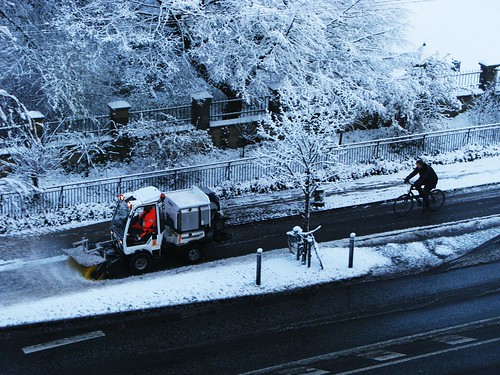Madison drivers are usually tolerant and respectful of cyclists, and Madison bicycle infrastructure is excellent. But as a year-round bike commuter, I do observe an increase in driver aggression, close passes, and intolerance once the snow begins to fall. (See Bikesafer's video from last winter...)
However it doesn't have to be this way. Copenhagen has very high year-round ridership, and they are meticulous about snow removal from bike lanes:
"Keeping the bike lanes clear is important. Not least for safety. But it is also a practical issue. 80% of Copenhageners continue to ride throughout the winter. That's roughly 400,000 people. If this massive group is somehow restricted in getting to work or school, imagine the chaos... Parents would be late getting their kids to kindergarten or school. There would be lost man hours because of people arriving late or not at all. The bike lanes are kept clear for the most basic, practical reasons."Perhaps if we can increase our ridership stateside we can demand a greater investment in infrastructure and demand greater respect.
Ride safely, and bundle up.


